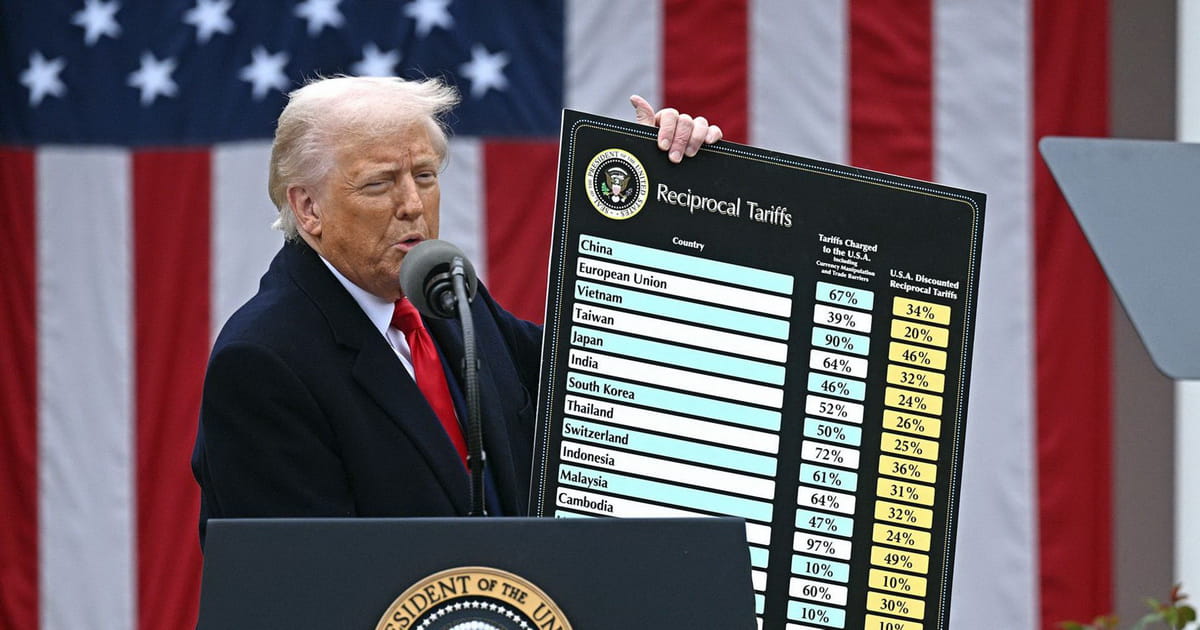Why Trump's tariffs are just the beginning and who will be hit the hardest

US President Donald Trump has launched a full-scale "trade war." At the same time, the President of the European Commission has acknowledged serious flaws in the global trade system and expressed readiness to "support any effort aimed at aligning global trade with the realities of the world economy." However, the way the US President has chosen to address these problems looks more like treating a headache with a guillotine.
And it's not just about the tariff hikes Trump has announced. His decision has opened Pandora's box, with consequences that will strike at the heart of global trade. Read more in the article by Yurii Panchenko, European Pravda's editor - Trump and Pandora's box: how new tariffs will reshape global trade and hurt Ukraine.
Trump's proposed trade protection measures fall into two categories. The first is a "minimum baseline tariff," which comes into effect on 5 April. This 10% tariff will apply to most countries worldwide, including Ukraine.
But for many countries, that's just the beginning. For nations with a significant trade surplus with the US, a "reciprocal tariff" will be applied starting 9 April, with rates set individually for each country. For the European Union, the "reciprocal tariff" rate has been set at 20%, for China - 34%, for Japan - 24%, and for India - 26%.
Moreover, the White House has left the option open to further increase these protective tariffs. However, even the current tariff levels represent a significant blow to economies, particularly those reliant on exports. In doing so, Washington is sending a clear message: partner countries must now implement their own measures to balance trade.
Overall, Donald Trump expects the United States to gain "six or seven trillion dollars" from the new tariffs. It's unclear how realistic that estimate is, but in the short term, the US budget will indeed see an increase in revenues (though this will likely be accompanied by rising inflation). The positive impact could be enough to keep the US economy in good shape at least through the 2026 midterm elections.
Trump has claimed his first global victory: a number of countries affected by the "minimal baseline tariff" have decided to make concessions in order to preserve stable international trade. The United Kingdom is a particularly striking example. Ukraine is also likely to be among those countries.
Based on recent statements from Ukrainian officials, Kyiv is not planning to introduce counter-tariffs against the US or challenge Washington's actions at the WTO. A full-scale trade conflict with the United States is something only a few countries can afford, namely China, India, Japan and, of course, the European Union. But the situation with the EU is especially complicated.
While major EU economies are strengthening the European Commission's case for countermeasures, some member states could act as "Trojan horses." Hungary, for example. In fact, Hungary and Slovakia, along with Germany, are among the countries hit hardest by Trump's 25% tariff on car imports. The greatest damage caused by the US President's initiative, however, is that global trade has become unpredictable.
In Ukraine's case, it is also important to note that the US tariffs will heavily impact some of the country's key security partners, most notably Germany, where the effect of these tariffs has been compared to a "return to the 1930s." This, in turn, destabilises the political climate in those countries, increasing the risk of reduced or suspended support for Ukraine. Finally, the new situation significantly lowers Ukraine's chances of extending the EU's autonomous trade preferences.
If you notice an error, select the required text and press Ctrl + Enter to report it to the editors.